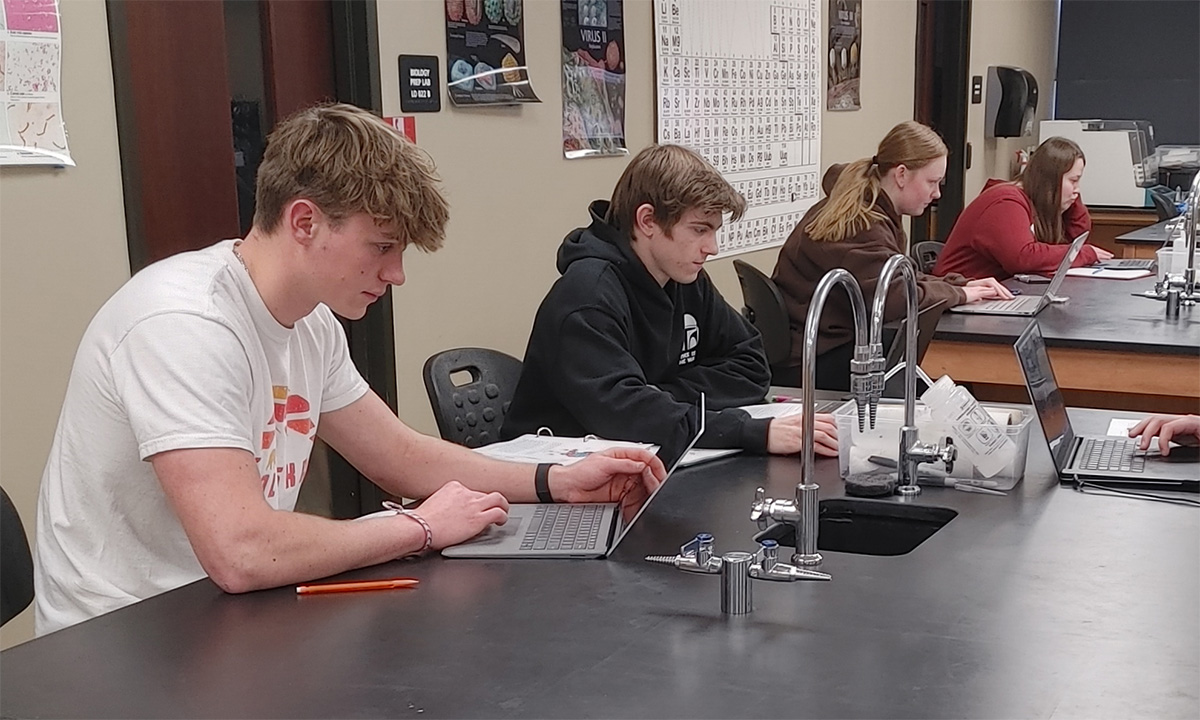
At Concordia University Wisconsin, general microbiology students have a “BLAST” learning to tap into the power of genomics.
By Dr. Justin Speck, Assistant Professor, Life Sciences
DNA is the language of life and all biological research is connected to an organism’s genome in one way or another. Understanding how to look at and manipulate the content of the genome is foundational to current research methodologies in the biological sciences. The tools involve both direct work with the organism and computational work on computers. Students who are competent in lab work and on computers will be better prepared to pursue research in the molecular age.
A future in research
To better prepare students for research, students at Concordia taking general microbiology have the opportunity to follow in the footsteps of Carl Woese using 16s rRNA (ribosomal RNA) to identify bacteria. They learn how to isolate bacteria and amplify the 16s rRNA portion of their genome. The 16s rRNA is useful because it is a vital part of the ribosome, and all living organisms have ribosomes. Because 16s rRNA is found in all bacteria it is used to compare organisms through sequence homologies (sequence similarities).
Students in general microbiology delve into the world of bioinformatics using the sequenced 16s rRNA they isolated and amplified. They are able to analyze the sequences using the BLAST (basic local alignment search tool) tool from the NCBI (National Center for Biotechnology Information) web page to compare their sequence to a database of over 29 million 16s sequences. Students submit a sequence to the NCBI supercomputers which quickly find sequences identical or highly similar to the one they submitted from the 29 million sequence database using heuristic algorithms.
Through this project, students learn the research methodology and tools involved in isolating a genetic sequence, cleaning it up, and BLASTing it. This training in modern molecular techniques prepares students to perform research in a modern lab. To further improve their ability to carry out research, students are taught how to design primers, identify restriction cut sites in their DNA sequences, and find useful information in Genebank.
Serving Christ in the world
In accordance with Concordia’s mission, it is impressed upon students that we participate in research to serve those around us and make a better world. In identifying organisms through bioinformatics we are following the first task God gave Adam in Genesis 2:19, where God had Adam name and thus classify all of the animals. Today the classifying, naming, and examining the relatedness of all living things is called phylogeny. We use bioinformatics to do this phylogenetic work and allow students to peer at the genetic language God has put in place. Through research, we reveal truths in nature, and in those truths, we see God’s attributes clearly displayed in the natural world.
Want in?
Concordia University Wisconsin is a Lutheran higher education community committed to helping students develop in mind, body, and spirit for service to Christ in the Church and the world. In the Department of Life and Earth Sciences, we’ll lead you to discover the complex details of God’s creation. Our vision is to provide you with a rigorous understanding of the world around you. By taking a “hands-on” approach to learning, we’ll help prepare you for vocations in research, education, graduate studies, and much more.